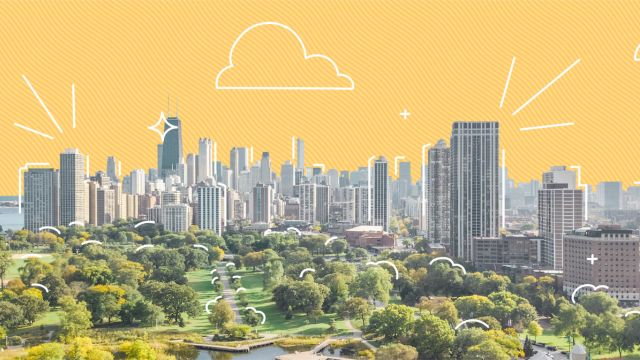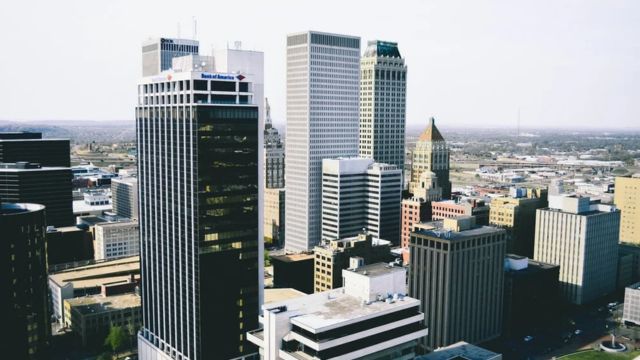This City Has Been Named the Most Cheapest City to Live in Tulsa
The dynamic city of Tulsa, Oklahoma, which is well-known for its bustling community and rich culture, has just been awarded the esteemed honor of being the cheapest place to live. With a wide range of districts and areas, Tulsa provides people with several possibilities for reasonably priced living without sacrificing quality.
Top 5 Most Cheapest City to Live in Tulsa
The following are the top five factors that help Tulsa maintain its status as an inexpensive city:
1. Midtown Tulsa
Recognized as a premier destination for reasonably priced living, Midtown Tulsa is distinguished by its varied housing options and distinctive atmosphere.
Offering people a variety of cheap living options, this neighborhood is home to a mix of apartment buildings, charming bungalows, and historic homes. Its desirability is increased by how close it is to services, parks, and entertainment areas.
2. East Tulsa

A popular neighborhood for many people on a tight budget, East Tulsa strikes a mix between affordability and convenience. Compared to other parts of the city, this location offers a variety of housing alternatives, such as apartment buildings and single-family homes, at comparatively lower costs. Shopping malls, educational institutions, and leisure centers are conveniently located for the locals.
3. West Tulsa
People looking for economical housing are drawn to West Tulsa by its affordable housing and strong feeling of community.
A variety of residential properties, including townhouses and modest residences, are available in this region at reasonable prices for both individuals and families. Its appeal is increased by its proximity to major employment centers and roads.
4. North Tulsa
Known for its vibrant culture and different neighborhoods, North Tulsa is a reasonably priced location. Reasonably priced housing, including apartments and single-family homes, is advantageous to the locals.
The neighborhood’s attractiveness and affordability are enhanced by its parks, community events, and cultural offerings.
5. South Tulsa
Although regarded as somewhat more affluent than neighboring regions, South Tulsa yet has several reasonably priced communities.
In some areas of South Tulsa, residents can find fairly cost housing options, such as townhomes and apartments. For many, the proximity to reputable schools, parks, and retail hubs makes the region a desirable option.
Navigating Your Budget in Tulsa: Estimating the Cost of Living
Tulsa, Oklahoma, is well-known for its affordability and vibrant community. It provides its citizens with an enticing combination of a good standard of living and a fair cost of living. Comprehending the costs associated with residing in Tulsa can aid individuals and families in efficiently organizing their financial plans.
1. Housing Expenses
Housing costs are one of the main items that go into any budget. The cost of housing in Tulsa varies according to preferences and location.
A one-bedroom apartment in the city center, for example, might cost between $700 and $1,200 a month to rent, whereas the same apartment outside the city center might cost between $600 and $900 a month. The cost of purchasing a property in Tulsa can vary greatly based on the location, size, and amenities.
2. Utilities
For a normal apartment, the monthly utility expenditures for rubbish collection, heating, cooling, and electricity might range from $100 to $200. These costs can be influenced by things like individual usage patterns and energy-efficient equipment.
3. Transportation

A monthly pass for public transportation in Tulsa costs between $45 and $60. The city has a reasonably priced transportation system. Additionally, given the volatility of petrol prices, gasoline costs for individuals who commute by car could vary from $2.50 to $3 per gallon.
4. Food and Dining Out
Depending on dietary preferences and habits, a single person’s monthly grocery expense may range from $200 to $300. Depending on how frequently you eat out and where you choose to eat, eating out might cost you an extra $150 to $300 a month.
5. Healthcare and Insurance
Depending on personal needs and coverage options, healthcare prices can vary greatly, including insurance premiums and out-of-pocket costs. The typical monthly cost of health insurance could vary from $250 to $600, depending on the provider and amount of coverage.
6. Other Miscellaneous Expenses
Depending on personal preferences and lifestyle decisions, other miscellaneous expenses including entertainment, clothes, personal care, and unforeseen costs might range from $200 to $400 each month.
Conclusion
These varied and reasonably priced neighborhoods contribute to Tulsa’s standing as the most cheap city to live in. Every neighborhood in the city, from North Tulsa’s rich ethnic diversity to Midtown’s energetic vibe, adds to the city’s reputation for offering reasonably priced housing options without sacrificing quality of life. Tulsa continues to draw people and families looking for reasonably priced yet cozy housing due to its friendly neighborhoods and range of housing options.
